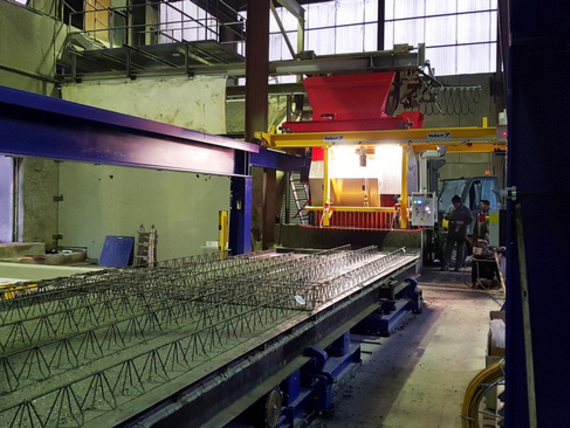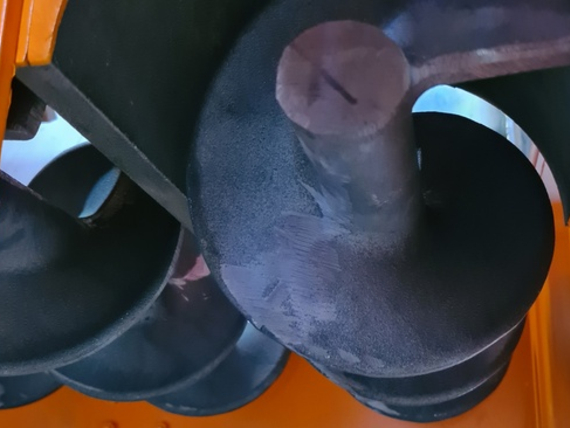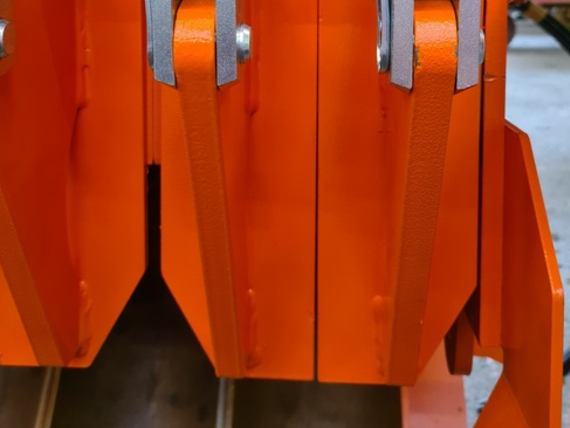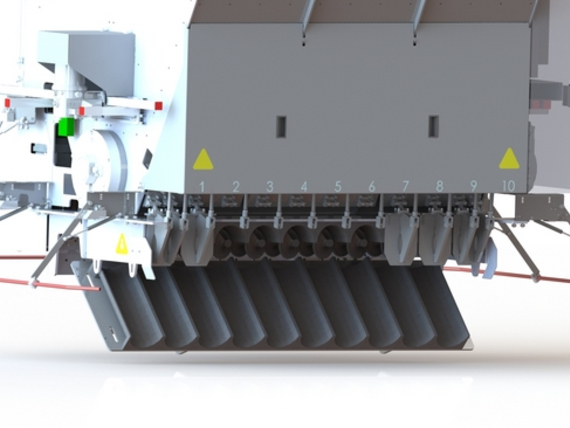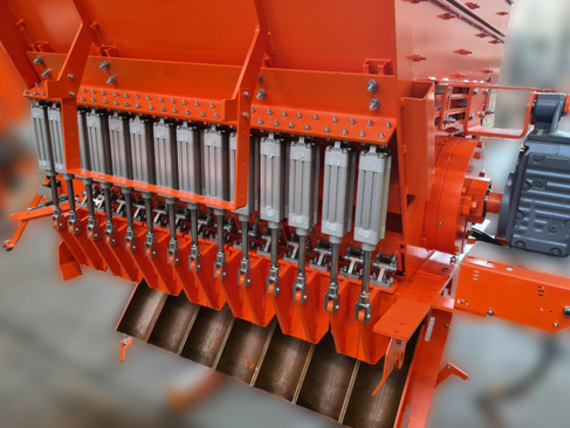Optimized, process-reliable concreting methods offer significant cost-saving potentials. Precise concrete dosage ensures accurately calculable material usage, CAD CAM-based travel paths ensure significantly faster cycle times. At the same time, new, high-quality components offer prevention of expensive downtimes. An important focus here is on the most stressed machine components in the concrete discharge process.
Nowadays, in automatic concrete spreaders, the discharge process is very often carried out via screw discharge units, with the screw drives being controlled individually or in groups in automatic mode. Sealing caps ensure clean discharge. A rotating distributor roller prevents the formation of a cone of debris and ensures a very good flow of concrete towards the discharge. However, due to the high abrasive stress caused by concrete, the discharge screws as well as the discharge ducts had to be renewed at regular intervals in the past, which caused expensive downtimes in addition to the actual spare parts costs. Thanks to new material mixtures, lifetime cycles are now significantly extended.
Longer lifetime in the practical test
"We spent a lot of time thinking about how we could extend the service lifetime of the machine components in concrete spreaders" explains Markus Schenk, Project Manager Sales at Vollert. "Instead of relying on welded and hardened sheet steel for the discharge screws, as in the past, we came up with cast steel after some pilot tests." Fully cast and post-hardened steel is significantly more resistant to wear. In an extensive series of tests in practice, an average of 3 times higher lifetime cycles were achieved for the new type of discharge screws with Tough Cast technology.
„Particular is also a special changing device for the discharge screws, which makes it possible to quickly change them as easily as changing a tire on a car," explains Markus Schenk. The drive shaft remains in its bearing position when the discharge screw is replaced, which means significant time and cost savings. The counterpart of the screw, the discharge duct, has also been further developed. Here, cast iron is used instead of sheet steel. The discharge ducts are inserted individually and can therefore also be replaced individually, which makes maintenance much easier. The compact modular design ensures very precise concrete discharge. The lower discharge unit can also be folded down completely for cleaning purposes. Thanks to this modular design, older concrete spreaders can also be converted and equipped with the new technology as part of a retrofitting.
Another important innovation, apart from the material, are additional half-flaps in the lateral or complete discharge area. Increasingly complex component geometries sometimes result in very narrow concrete contours. "In order to take these requirements into account in the concreting process as well, our SMART CAST concrete spreaders can now be optionally equipped with half flaps" explains Markus Schenk. The concrete can thus be applied very precisely and partial segments can also be completely recessed. "Through such further developments in the component materials as well as in the concreting process, our customers achieve cost savings very quickly. Particularly important to us at Vollert is the connection to practice, which we achieve through a permanent exchange with our customers.“


